What makes it necessary to lay a gas supply system to a plant, to a factory, to a combine or to a power plant? First of all, gasification of industrial facilities provides them with uninterrupted heating.
Secondly, it is the possibility of continuous hot water supply. Thirdly, gas can be used in various technological processes as fuel, and some enterprises need steam supply.
We will talk about how the organization of water supply systems at industrial enterprises is carried out. The article presented by us describes in detail the options for arranging gas supply systems and their demanded varieties. The costs for the construction of main gas supply circuits are considered.
The content of the article:
- Gas fuel options
- Types of gas supply systems
- Centralized gasification of industrial enterprises
- Autonomous gas supply of organizations
- Gasification service costs
- Conclusions and useful video on the topic
Gas fuel options
The main consumers of gas are factories and power plants. They use gas as an efficient fuel. Enterprises of the chemical, metallurgical, machine-building industries also use gas in the implementation of technological processes. In cities, the food industry is actively switching to gas.
Gas supply to an industrial enterprise, depending on fuel sources, can be carried out in different ways. Large industrial enterprises use their own gas sources. In most cases, it is generator gas, coke oven gas or blast furnace gas. When processing coal, artificial gases are emitted: lighting gas, coke oven gas and others.
The interaction of chemical elements in production processes leads to the release of gas as a by-product. If an insufficiency or shortage of resources is found, then industrial enterprises are often connected to the main gas pipeline, where natural gas is supplied: standard or associated petroleum gas.
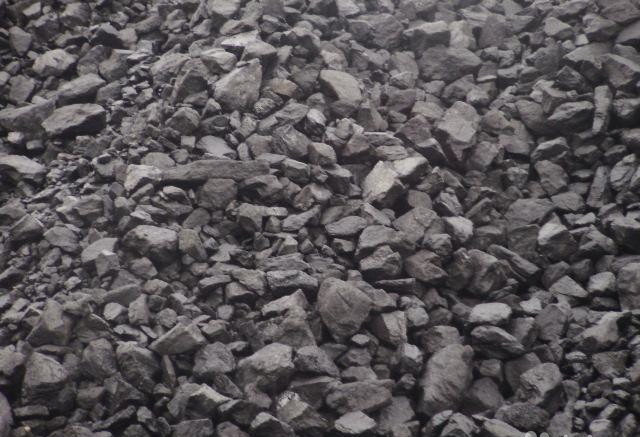
The coking or pyrolysis of coal is carried out by heating it to very high temperatures. Furnaces in which this process takes place do not allow oxygen to pass through. As a result, in addition to a number of by-products, gaseous compounds are also obtained
Natural gas is considered the best fuel option for gas supply.
This is due to the following advantages:
- low price for natural gas;
- high calorific value;
- the possibility of fast and cheap transportation;
- a small amount of harmful emissions into the air during combustion;
- full automation of combustion.
Gas outperforms other types of fuel due to the fact that it is supplied mainly through pipelines.
This allows the owners of industrial enterprises to free up the territory intended for solid fuels and their waste. It also eliminates the need to have vehicles for the constant transport of large volumes of fuel.
Types of gas supply systems
Industrial enterprises can be gasified with several schemes, which differ depending on the design conditions of each individual facility.

The use of a specific gas supply scheme or a combination and combination of several schemes is determined by individual design conditions. The combination of schemes is usually designed in cases where the demand for gas in the workshops of the enterprise varies greatly.
Single stage gas supply systems are designed in cases when:
- it is planned to connect the enterprise to the city gas main with a low pressure level;
- it is envisaged that an industrial enterprise will be connected to the city gas network by central gas control point, if it is necessary to ensure low pressure in the gas pipeline object;
- the connection of an industrial facility to urban networks is being developed by connecting to a central system through a gas distribution point with a future average level of gas pressure in the pipes.
Installation of two-stage systems is provided in the following cases:
- when connecting shop gas distribution units of an industrial facility to a city gas main through distribution points of medium and low pressure in shop gas pipelines;
- when connecting shop gas distribution units of an industrial enterprise to a city gas network of medium pressure at an average pressure level in shop gas pipelines;
- when connecting shop gas distribution units to the central gas distribution point urban networks with an average pressure level in inter-workshop gas pipelines and a low pressure level in workshop gas pipelines;
- when connecting shop gas distribution units to the central gas distribution point of city networks at an average level gas pressure in inter-shop gas pipelines and at an average pressure level in shop gas pipelines.
When designing a gas supply system for a particular industrial plant, engineers often face the need to combine schematic diagrams for the specific conditions of the gasified object.
Centralized gasification of industrial enterprises
Industrial gas supply systems include a number of components.
The main components include:
- gas pipeline inputs to the territory of the organization;
- a network of inter-shop gas pipelines;
- in-house gas supply system;
- regulatory items and settings;
- devices measuring gas consumption;
- connecting gas pipelines of devices that consume gas.
Gasification by connecting to the main gas pipeline is typical for the largest factories - the flagships of industrial production. The overwhelming majority of small and medium-sized industrialists use urban gas services.
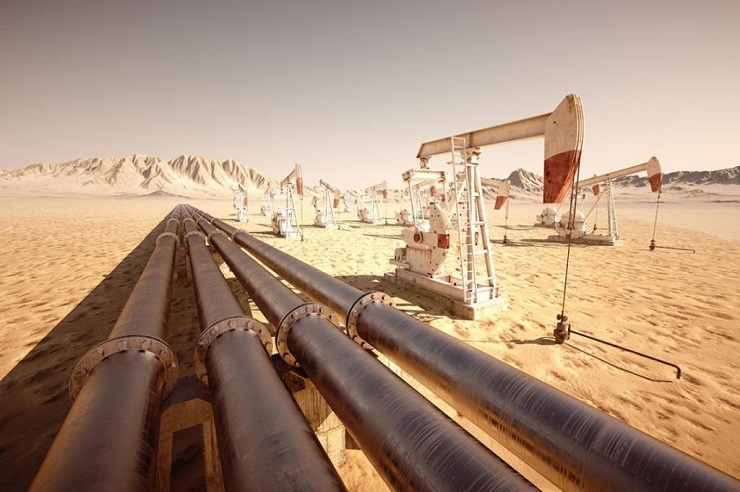
The pipeline is carried out strictly in accordance with the technical solution in the project. It takes into account all the features and individual conditions of pipe laying. Earthen embankments or supports are mainly used as a load-bearing element for laying.
Gas is supplied to industrial facilities from a loop-back distribution network. There are three pressure levels: high, medium and low. Most factories and factories are powered by high and medium pressure air defense systems. And only a small number of small urban industrial facilities have enough low pressure.
Large industrial facilities are supplied with two inlet pipelines from different highways, which are then combined on the area of the facility. The pipelines transporting gas to the facility are made above ground or underground.
Onshore pipelines are more popular as they are easier to inspect and maintain. In the event of gas leaks, such pipelines are not so dangerous. They are also not subject to constant corrosion.
They are installed on supports or run along fire-resistant external walls and structures. The height of the gasket is regulated by regulatory documents.

Onshore gas pipelines transport fuel under conditions of variable thermal conditions. They are allowed to be installed along the outer walls of buildings in which there are industrial premises classified in categories G and D. It is also possible to lay on the fire-resistant coatings of the premises of the first and second degree of fire resistance
Several taps or valves with a lens compensator are placed along the pipe: one outside the territory industrial building and several, depending on the needs of the enterprise, directly on the territory object.
At large factories, each inter-shop gas pipeline has its own separately developed scheme, which is drawn up depending on the level of gas consumption. Schemes of inter-shop gas pipelines by and large differ in the number, location and type of gas control points.
In small factories powered by a loop-back distribution network with a low pressure level, gas control points are usually not installed, however, a gas flow metering point is required.
If the pressure level is higher than necessary, then a central gas distribution point is installed on the territory of the industrial facility. The device reduces the pressure to the required level in the enterprise.
If necessary, in some workshop to ensure a different pressure value, a gas distribution unit is installed in it, with which you can adjust the pressure indicators.
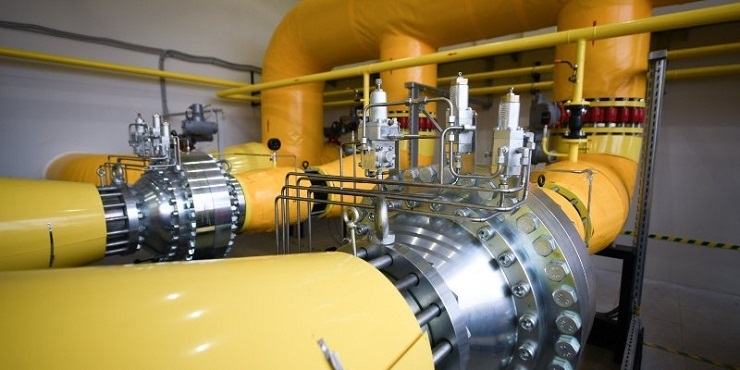
Modern engineering developments allow the introduction of new equipment. Gas control and distribution through the pipes of the system is greatly simplified, which avoids adverse consequences in cases of leaks and unforeseen accidents
If an individual pressure level is needed in each workshop at an enterprise, then it is possible to lay a gas pipeline to each separate workshop. For this, a gas distribution unit must first be installed.
Gas consumption at various enterprises is uneven and depends on many factors. Usually, increased consumption of the resource occurs during the daytime, when the main technological processes are carried out in plants and factories.
On weekdays at most industrial enterprises, gas consumption is higher than on weekends. However, some factories operate without technological downtime.
To calculate gas consumption, it is important to take into account the seasonality. In winter, in cold regions, the resource consumption is several times higher than in summer. Due to the unevenness of gas consumption, a number of problems arise.
In summer, remote gas pipelines do not operate at full capacity, and in winter it becomes necessary to reduce or completely cut off gas supply to individual sections.
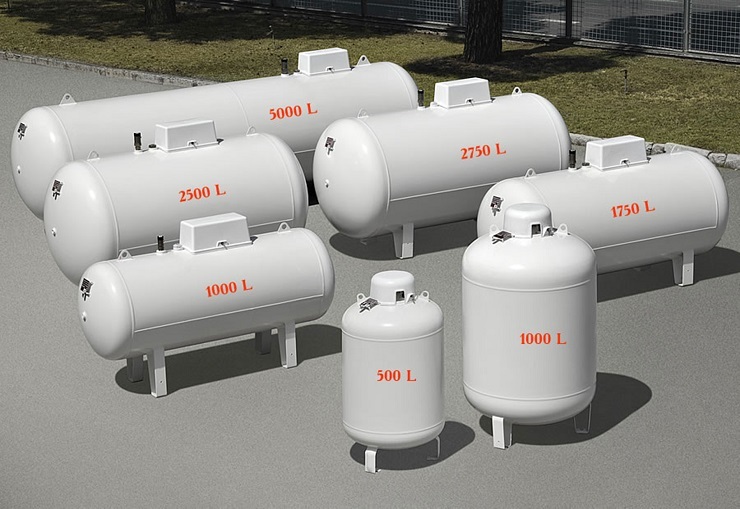
Due to the possibility of choosing a gas tank of a suitable volume, industrial enterprises have the opportunity to organize an efficient and uninterrupted gas supply. When buying a gas tank, you should pay attention to its compliance with European quality standards.
In the device of autonomous gas supply networks for enterprises located inaccessible for laying gas pipeline of the area, use special containers - gas tanks, designed for industrial objects. This option also applies if the organization of a standard gas pipeline is unprofitable.
In order to fully use the resource in the summer period, buffer consumers are installed, which can operate on several types of fuel. They are designed for a quick transition of the unit from the consumption of one resource to another.
Autonomous gas supply of organizations
If an entrepreneur is wondering how to gasify his enterprise, one of the possible solutions turns out to be connection to a centralized gas supply. However, the legislation also provides for the possibility of using autonomous gas sources.
The advantages of autonomous gasification include a decrease in the level of gas consumption from the general network. The costs of setting up an autonomous gas storage, as well as gas tank installation cost in a suburban area, significantly lower the cost of laying pipes and connecting to a centralized highway.
Such systems are used for the following purposes:
- provision of cogeneration plants with the necessary fuel for efficient generation of electric and heat energy;
- fuel supply to gas infrared heaters;
- ensuring continuous operation of gas generators;
- provision of the necessary resource for gas-fired boiler houses.
At industrial enterprises, gas can be used as the main energy carrier or as a resource to ensure the operation of a backup power supply scheme. In the second case, gas tanks are purchased, which should be installed strictly in accordance with the standards of GOST and SNiP.
The casings of the gas holders are covered with a protective layer that prevents the processes of electrochemical corrosion.
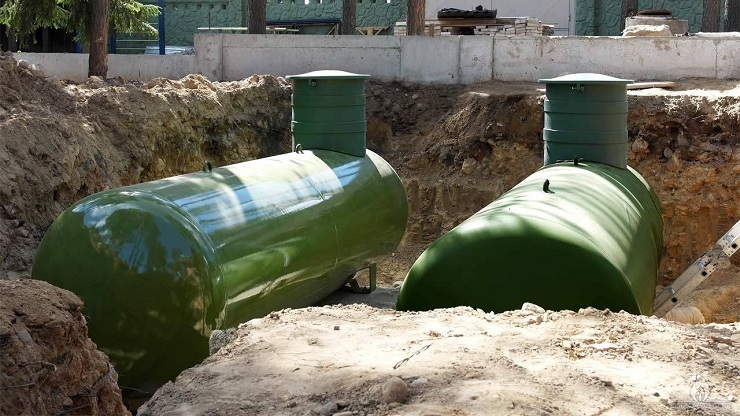
Most types of gas tanks are designed to be placed underground. This cost-effective solution allows you to save production space and use the land area for other needs. Underground installations are covered with a protective layer provided at the production stage
Among the necessary equipment for conducting an autonomous gas system at the facility, there are:
- Liquid or electric evaporators, which are additionally equipped with a regulatory group. They increase design productivity.
- Mixers installed on pipelines of enterprises connected to the central highway;
- Drain unit for removing condensate;
- Gas pipelines for various phases of gas mixtures;
- Condensate collectors collecting and draining condensate from the pipeline to evaporators or devices for its utilization;
- A control complex designed to automate control over the operation of the tank farm.
Tank installations have the following working scheme:
- Liquid gas filling;
- Storage of liquid fuel under pressure in a tank;
- Supply of the liquid phase to the evaporator;
- Conversion of the liquid phase into vapor;
- Vapor phase supply to equipment and burners.
Gas is supplied to the evaporator using pumps. The tank complex must be equipped with an automatic control system.
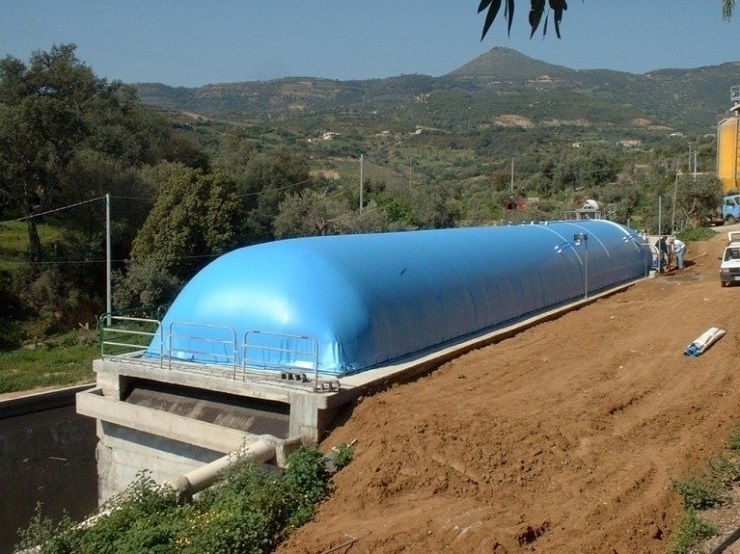
Among the disadvantages of underground gas tanks are the high cost of their installation and possible risks. If it is not enough to insulate the system, it can freeze. There are also unscrupulous suppliers who fill in raw gas. Working with gas always requires close attention
The procedure for gasification of an industrial enterprise does not depend on whether gas is used as the main energy carrier or as a fuel for backup power supply. For gasification of the organization, it is necessary to carry out a number of successive measures.
Even at the design stage, the concept of "gasification of an enterprise" is clarified and concretized. Thus, the documentation indicates the sequentially gasified: equipment, communication systems, workshop and enterprise.
First of all, you should submit an application to the design institute. There, heat engineering calculations are carried out and the need of the gasified facility for fuel is determined, depending on the technological conditions at the enterprise.
The next step is to send a letter to the gas distribution organization in the region. It must contain a request for the issuance of a certificate confirming the technical feasibility of connecting an industrial facility to regional gas networks.
A situational plan and a heat engineering calculation carried out at a design institute should be attached to the listed set of papers.

A prerequisite for conducting a gas supply system is the installation of a gas flow metering point. The displayed fuel consumption will not only allow you to track and calculate indicators and future costs, but also help to identify leaks in places inaccessible to the eye.
The regional gas distribution organization also receives a certificate of the technical feasibility of connecting the enterprise to gas distribution networks.
To obtain technical conditions for gasification in the design and technical department of the design organization developing the project and estimate, it is necessary to obtain a permit to use natural gas as a fuel.
Also, a tripartite agreement is signed between the gas supplier, consumer and gas distribution organization. After receiving all documents and permits, installation and installation of all systems and equipment is carried out and the gas is started up directly.
Gasification service costs
The use of natural gas is economical, uninterrupted and highly environmentally friendly. When the owners and responsible persons of industrial enterprises, plants, factories realize the future benefits from gasification, they ask themselves about the cost of gas pipeline services.
Owners of private households ask similar questions. connection cost worries no less than the heads and the board of directors of enterprises. In fact, the cost items for private and commercial consumers are similar, the difference is mainly in tariff rates.
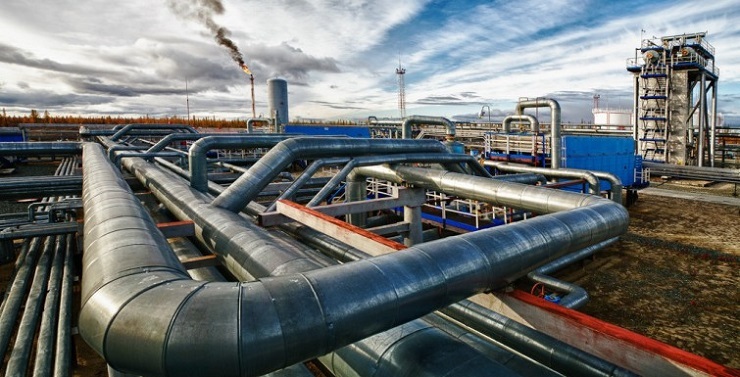
The gas pipeline is possible only if there is a confirmation of the technical feasibility from the gas distribution organization. After the verdict on the admissibility of connecting to the gas main is issued, an estimate is drawn up for the performance of work
On the one hand, the necessary documentation can be collected personally. In this case, you will have to face the problems of documenting, spend personal time, money and delve into all the processes. The direct installation of gas systems must be carried out in accordance with the norms and rules approved by state bodies.
Only companies specializing in the arrangement of gas pipelines will be able to carry out such work. You can use the services of small teams, contractors or teams of large services.
On the other hand, there are a number of companies on the market that provide comprehensive services for the arrangement of gas supply to industrial and commercial enterprises. Such organizations for a pre-agreed amount will carry out the whole range of works, including paperwork, purchase of equipment and installation of all systems.

Only certified companies provide high-quality comprehensive services for the construction of a gas pipeline with stage-by-stage support from design to launch of all systems. When contacting incompetent specialists, the progress of work may stall at the initial stage
Of course, the services of such companies are not cheap. However, they guarantee high quality work and fulfill orders as soon as possible.
The cost of the services of specialized companies varies depending on a number of factors:
- power of the installed equipment, measured in kW;
- the number of facilities on the territory of the enterprise that will be supplied with gas;
- the presence and number of technological gas consuming devices;
- the projected length of the gas pipeline, measured in meters;
- geological conditions of the route along which the gas pipeline will be laid.
In order to save on gasification, it is recommended to adhere to the following tips:
- thermal insulation of gas-conducting structures reduces heat loss of heated objects and the required power of the equipment;
- installation of modern heating systems pays off in a short time due to their high energy efficiency;
- in the presence of industrial facilities in the neighborhood, it is worth considering the joint design of supply gas routes;
- calculate the most optimal route and method of laying gas routes.
On average, it takes from 12 to 15 months to complete all stages from design to the launch of gas supply systems.
Conclusions and useful video on the topic
How to choose and install a gas tank:
Laying the gas pipeline underground:
Conducting a gas pipeline and adjacent gas systems to industrial facilities is a complex and multi-stage process. For its successful implementation, many nuances and features should be taken into account. It will also require serious cash investments for the purchase of equipment and payment for installation work.
However, the money spent will pay off in the near future. This is due to the inexpensive cost of natural gas, good price-quality ratio and high environmental friendliness. The company does not need to purchase expensive filtering equipment in order not to pollute the environment.
There are several possible problems that an enterprise will have to face. Difficulties may arise in obtaining agreements and licenses. It is also necessary to obtain the consent of the owners of the land on which the pipeline will be laid. All problems are easily resolved with the right approach.
Since working with gas is primarily a responsibility and qualification, it is important to choose a good contractor. It is recommended to cooperate with companies with positive experience in laying gas communications. The firm must know all the subtleties of work and be aware of its responsibility.
In difficult situations, one has to cooperate with state supervision authorities and fulfill their requirements and recommendations. It is also possible to make adjustments during the laying and installation process.


